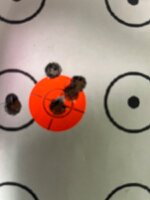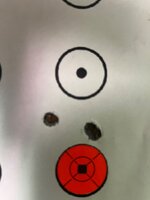Hey Guys,
I have a question for some of you out there that are way smarter than me when it comes to reloading/firearms.
I have a 300prc that I have been shooting and it is shooting extremely well, except for the cold bore shot. My first shot is consistently .75-1" low at 100 yards with this rifle. This has been true with a handful of different load recipes. I have 2 questions for you fellas.
1.) Is there a remedy for this?
2.) I bought this/set this up to be a long range hunting rifle. Right now, the cold bore shot equates to roughly .25mil low at a 100, so will this always be .25 mils low? So, if i am taking a shot at 500 on an elk is my cold bore shot gonna hit roughly 4" low, or would it likely come in the same 3/4" low as it does at a 100yds? I will be testing some more here this summer but was curious what you all think/know.
Lastly what causes cold bore issues? This gun has been impressive after "warming up" and i have many other rifles that have no difference at all on there cold bore shot. Just curious.
As always appreciate the advice.
I have a question for some of you out there that are way smarter than me when it comes to reloading/firearms.
I have a 300prc that I have been shooting and it is shooting extremely well, except for the cold bore shot. My first shot is consistently .75-1" low at 100 yards with this rifle. This has been true with a handful of different load recipes. I have 2 questions for you fellas.
1.) Is there a remedy for this?
2.) I bought this/set this up to be a long range hunting rifle. Right now, the cold bore shot equates to roughly .25mil low at a 100, so will this always be .25 mils low? So, if i am taking a shot at 500 on an elk is my cold bore shot gonna hit roughly 4" low, or would it likely come in the same 3/4" low as it does at a 100yds? I will be testing some more here this summer but was curious what you all think/know.
Lastly what causes cold bore issues? This gun has been impressive after "warming up" and i have many other rifles that have no difference at all on there cold bore shot. Just curious.
As always appreciate the advice.


